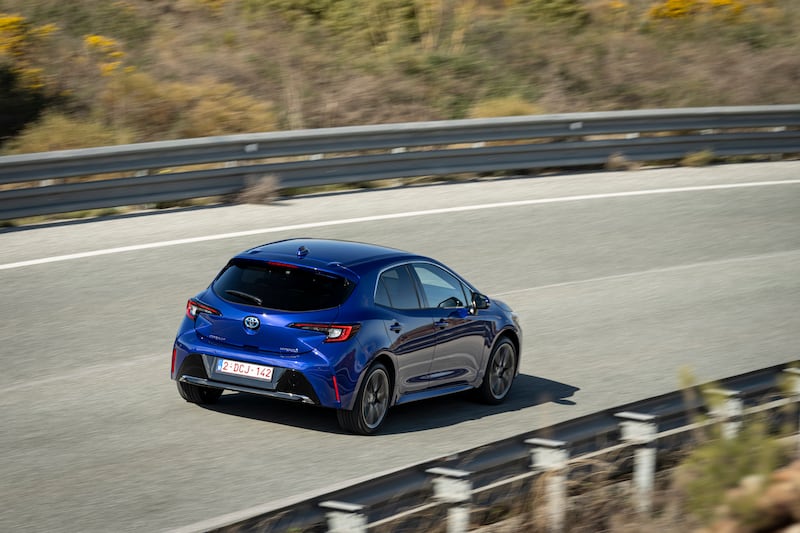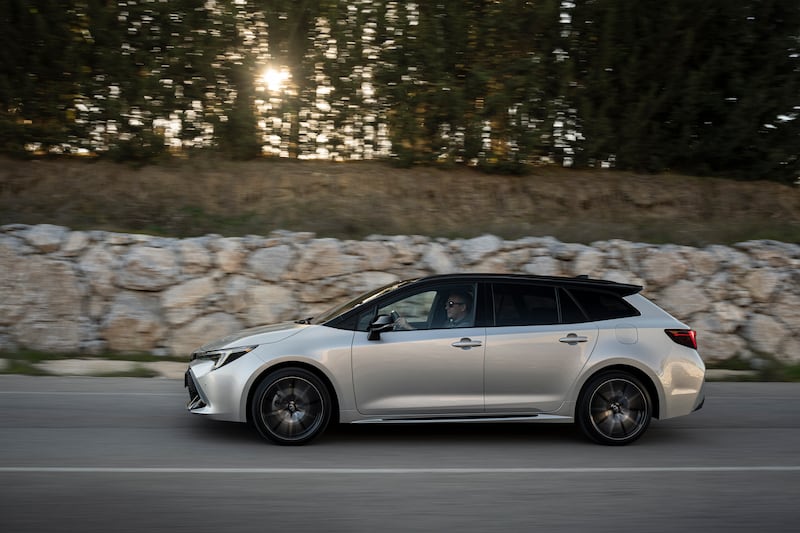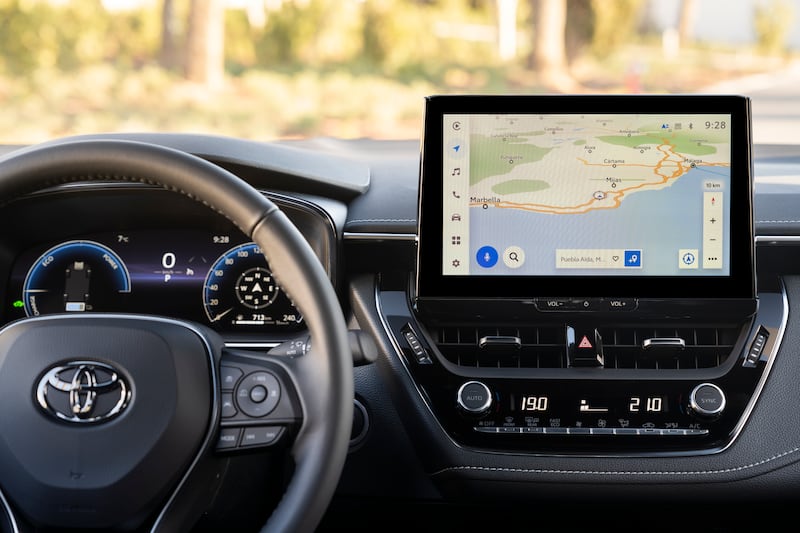The Toyota Corolla is a victim of its own success in many ways. A bit like beige paint, it is the go-to option for Irish families, a safe uncontroversial car option that doesn’t stir debate or demand justification.
A seemingly minor mid-life facelift shouldn’t garner much discussion then. However, there is more to this update than meets the eye.
What does meet the eye is the subtlest of changes; the sort of detailing only a diehard anorak would spot, the type of person you avoid sitting next to at a wedding.
But under the skin there have been improvements to the hybrid powertrain that should give the Corolla a new lease of life. Meanwhile in the cabin, new tech keeps the car current.
READ MORE
Let’s first focus on the biggest change. In terms of the hybrid set-up, while the 1.8-litre petrol engine remains largely the same, now we get a lithium-ion battery pack that delivers 14 per cent better output while at the same time weighing in 14 per cent lighter. That’s powering an electric motor that puts out 23bhp more than in the past, bringing it to 94bhp, while also being 16kg lighter.
While the battery pack is still relatively small – at less than 1kWh – than the typical packs in plug-in hybrids or fully electric cars, it does deliver a noticeably greater pep in the Corolla’s performance.
Combined with a revamped engine management system, it’s a major leap forward on the seemingly sluggish and unimpressive outgoing set-up.
[ Ora Funky Cat: Don’t be fooled by name or look of this thoroughly modern motorOpens in new window ]
In the past, our main gripe with regular hybrids were twofold. First, the engine was called upon too quickly to make any noticeable difference outside slow town traffic; and second the CVT transmission set-up left the engine clinging to high revs when you kicked down the accelerator, resulting in an annoying whine pervading through the cabin. If it was meant to deter assertive acceleration, it certainly worked, but it hardly endeared motorists to hybrid.
This time the increase in battery and electric motor output means the EV elements carry a little more heft into the equation – and it shows. The CVT still leaves the engine revs hanging in high voice at times, but it’s a big improvement on the past.
You still have to adapt your driving style to be gentler on the throttle – pretend you are in your socks and there are thumb tacks on the accelerator pedal – but when you need to push on, the Corolla can deliver.

In three hours of driving on a mix of tight mountain roads and motorway, I managed to make 62 per cent of my trip in electric mode, according to the car’s in-built measurement. Overall, we achieved an average of 5.6 l/100km (50.4mpg).
If those figures are accurate then there remains a lot of scope for regular hybrids in the automotive debate.
Toyota has added some new tech features to assist in improving your electric range. A new deceleration system taps into the adaptive cruise control system to monitor the road ahead and when it notes a car in front, it begins to use regenerative braking to slow you down when you lift off the throttle. It does the same when you approach bends.
While the end result isn’t quite the same one-pedal driving you get on many EVs these days, it does noticeably reduce coasting.
Overall, the new hybrid set-up delivers a more relaxed experience for the driver. It’s never really racy and you might like a little more pace (and a little less engine noise when overtaking), but in the round this Corolla fits the family bill.
[ Video: Our Test Drive - Range Rover P440e PHEVOpens in new window ]
In keeping with that theme, the ride is tuned, the handling is still a little light and soft and the front nose dips in understeer when you take too much speed into a bend, but it’s never fidgety.
The Corolla will still be offered in the usual trio of traditional flavours: saloon, hatchback and touring estate. There is also the recently launched Corolla Cross SUV.
The saloon remains the best option for family buyers, offering a spacious Toyota saloon, filling a gap left with the demise of the Avensis a few years back. Built in Turkey, it doesn’t offer the same degree of dynamic appeal as the hatchback, nor does it seem as refined in terms of noise and vibration, but it has more room in the back. Of all three, the saloon suffered most from tyre noise.
The hatch is slightly tidier through the bends and a little quieter in terms of road noise, but sacrifices rear seat space.

The sweet spot for buyers is arguably the touring estate. Built alongside the hatch at Toyota’s plant in the UK, it delivers better refinement than the saloon and more space than the hatchback. However, it does start at €34,090 for the entry Luna grade compared with €32,530 for the hatch and €33,280 for the saloon.
Ultimately, given the conservative tastes of Irish Corolla buyers, it’s easy to see why the saloon will still be the strongest seller. Particularly as the mid-range Luna Sport version is the same price of €36,000 in both saloon and hatchback formats, giving the booted variant an edge.
As to the new tech in the interior, the most noticeable change is that both a bigger 10.5-inch centre-mounted touchscreen and a full 12.3-inch digital instrument cluster for the driver are standard.

The touchscreen promises faster reaction times due to better processing speeds, while Toyota now delivers over-the-air updates remotely to the new Corolla. A more advanced app is also standard, bringing it in line with most mainstream rivals.
The new touchscreen is a big improvement and while it replaces buttons with shortcuts along the side, moving between menus is easy and the icons are much clearer. The only issue is with the volume buttons, which are simply too small.
In terms of options, the mid-level Luna Sport grade in the saloon delivers heated front and rear seats, though features like front- and rear-parking sensors are only on the top grade.
Toyota has an enviably loyal customer base, particularly for Corolla, built largely on a strong track record for reliability, as shown in numerous automotive surveys. Certainly, there are far more engaging cars to drive, more practical crossovers to choose, but opting for this latest Toyota doesn’t demand any sacrifices from family buyers. It’s a very solid performer that now delivers more driving refinement while keeping pace with the ever-changing tech world. It’s easy to see why so many turn to Toyota for a Corolla.















